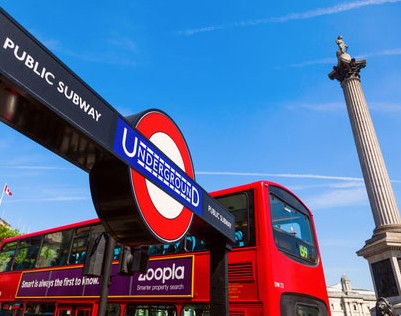Growth in passenger numbers on London’s transport network continues at record pace
- Like
- Digg
- Del
- Tumblr
- VKontakte
- Buffer
- Love This
- Odnoklassniki
- Meneame
- Blogger
- Amazon
- Yahoo Mail
- Gmail
- AOL
- Newsvine
- HackerNews
- Evernote
- MySpace
- Mail.ru
- Viadeo
- Line
- Comments
- Yummly
- SMS
- Viber
- Telegram
- Subscribe
- Skype
- Facebook Messenger
- Kakao
- LiveJournal
- Yammer
- Edgar
- Fintel
- Mix
- Instapaper
- Copy Link
Posted: 10 November 2014 | Transport for London
The number of journeys on London’s transport network is continuing to break records Transport for London announced, with 76.1 million passenger journeys on London Underground and London Buses combined during the week of 22 September – the highest ever level…


Growth in passenger numbers on London’s transport network continues at record pace
The number of journeys on London’s transport network is continuing to break records Transport for London (TfL) announced today, with 76.1 million passenger journeys on London Underground and London Buses combined during the week of 22 September – the highest ever level. London Underground saw 26.1 million passenger journeys, while London Buses carried 50 million passenger journeys – the largest number ever for buses.


Growth in passenger numbers on London’s transport network continues at record pace
Last year’s combined Tube and bus record of 75.8 million journeys was set during the week of 9 December, which traditionally sees higher passenger numbers as London gears up for Christmas, and new highs are expected to be reached this coming December.
London’s population continues to grow faster than any other European city. The population is expected to grow from 8.4 million today to reach 10 million by 2030. Demand for public transport is predicted to increase by 60 per cent on the Underground and 80 per cent on the national rail network by 2050, compared to current levels.
TfL is delivering sustained investment across Tube and bus services to meet this growing demand. The bus service is now one of the most extensive anywhere in the world, and more buses, new routes, and more late night services have been added. Redevelopment work to increase capacity at key Tube stations and make them step-free is underway at Victoria, Tottenham Court Road and Bond Street, and more frequent services have recently been introduced on the Victoria and Jubilee lines. The first phase of the modernisation of the Northern line will be completed soon – increasing capacity by 20 per cent and capacity has also been increased on London Overground and the DLR.
If service levels are to meet future demand and ensure that the network can continue to support new jobs and growth, sustainable investment must be guaranteed. Consultations are currently underway on proposals to extend the Bakerloo line and extending London Overground to Old Oak Common and Barking riverside. After Crossrail, operated by TfL, enters service from 2018, London’s economy and population will already need Crossrail 2.
Sir Peter Hendy CBE, London’s Transport Commissioner, said: “Thanks to vital investment and a programme of modernisation we’ve seen delays cut and more frequent and reliable trains and buses. However, we have to keep looking towards the future, and continue the investment, to ensure our transport network keeps pace with the growing number of people who need it. Only through this can the network continue to be a driver of the UK’s economy, and maintain London’s position as a world-leading city.”
TfL is making widespread improvements to the network while continuing to deliver huge savings. The £16bn savings and efficiencies programme to 2020/21 has secured savings of up to £12bn. This programme is central to helping to meet the challenge of operating one of the world’s oldest and most extensive transport networks while, at the same time, upgrading and modernising it to accommodate London’s rapid growth.
Related cities
London, United Kingdom
Related organisations
London Underground, Transport for London (TfL)
Related people
Sir Peter Hendy



